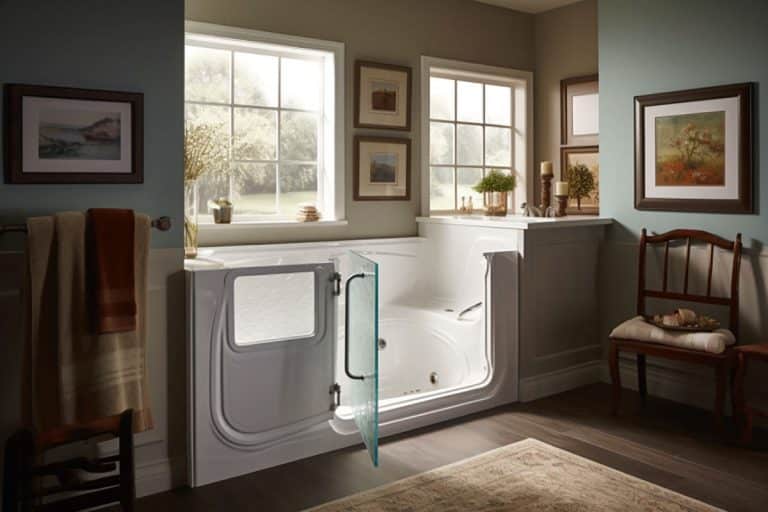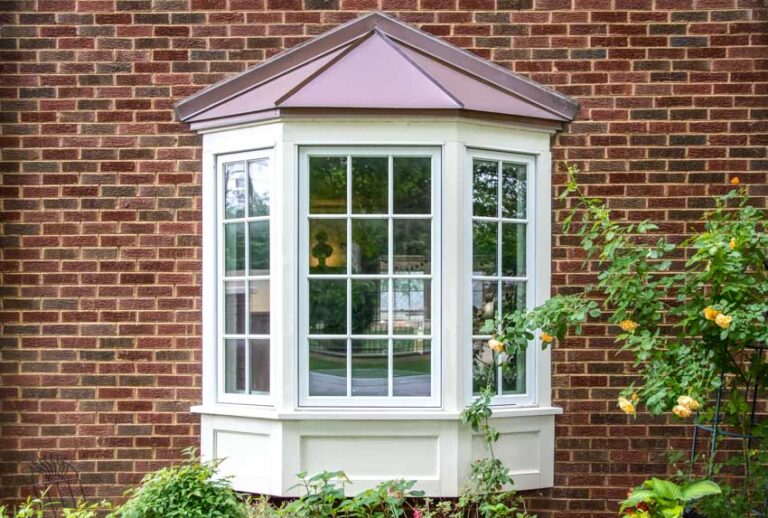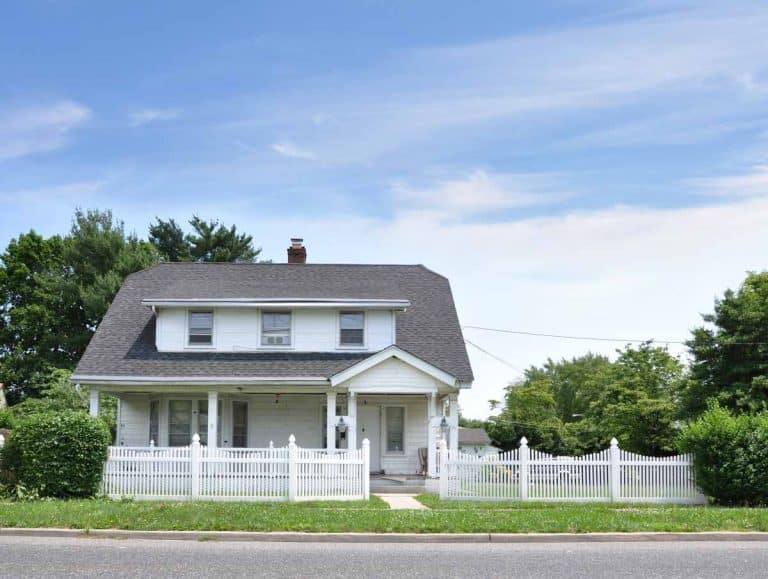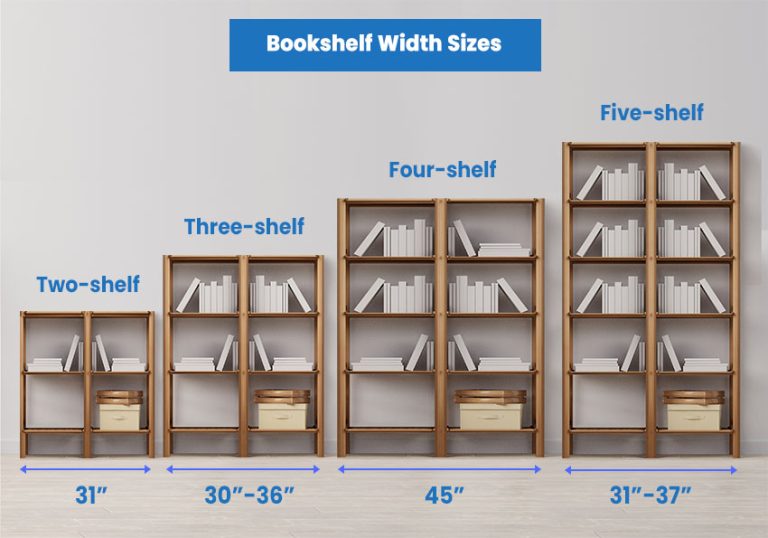8 Standard Bedroom Window Sizes and Their Uses
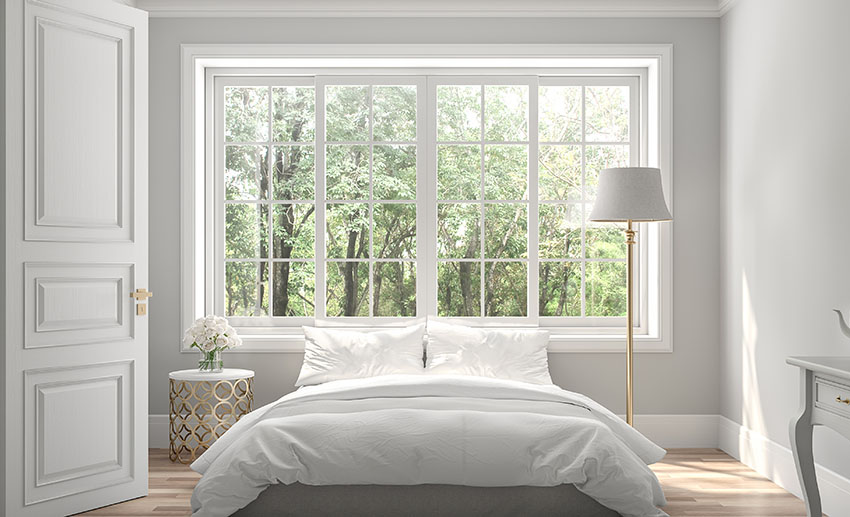
One thing a prospective buyer or renter is looking for in a house or an apartment is whether or not its bedroom has windows, and you can’t blame them. Windows not only promises a view of the outside; they also provide electricity-saving by allowing light to come in the room during the daytime and add to the overall aesthetic appeal as they make a room look bigger. This article will guide you through different window sizes and dimensions to help you decide what type and proportion they should be.
Standard Window Dimensions For Bedrooms
When you are looking to construct or revamp a home, the windows are an integral part. Usually, there are sizes available ready-made; though they are not considered standard sizes, they are what builders or contractors typically use in their business. A window’s standard size is dependent on many factors, such as when the house was built or how proportionate it is to the house, to name a few.
With that said, the most common size is 24” x 36”. Standard bedroom widths are 36”, 48”, and 60”. To develop a comprehensive list, we will list seven common bedroom window types and the usual size or dimensions they come in.
Single or Double Hung Window
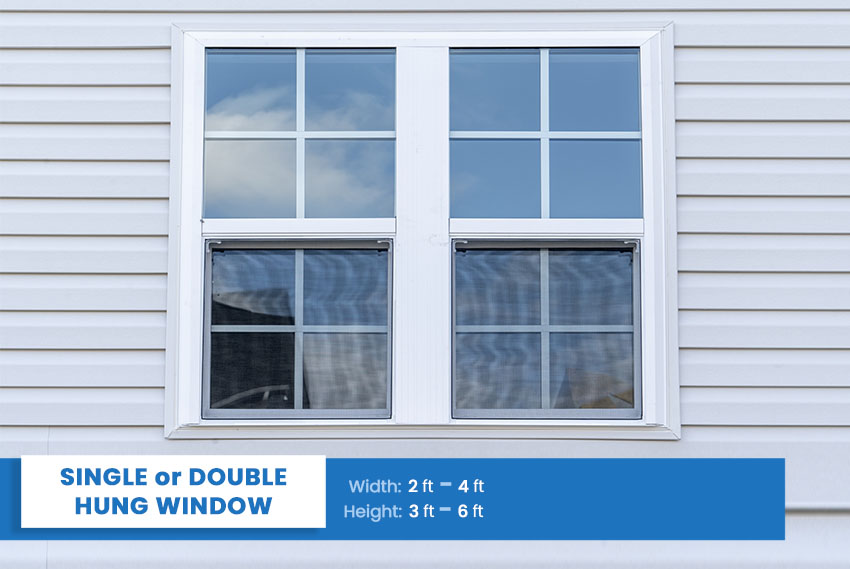
A single or double-hung style is one of the most popular, usually found in bedrooms, kitchens, and hallways. The main difference between the two is a double-hung window have two sashes (panels) that can both move up and down independently. On the other hand, a single-hung style only has one moveable bottom sash.
The conventional width for this style is anywhere between 24 to 48 inches.
Popular combinations of width and height (in inches) are:
- 24 x 36
- 24 x 48
- 28 x 54
- 28 x 66
- 32 x 54
- 32 x 72
- 36 x 48
- 36 x 60
- 48 x 60
Picture Window
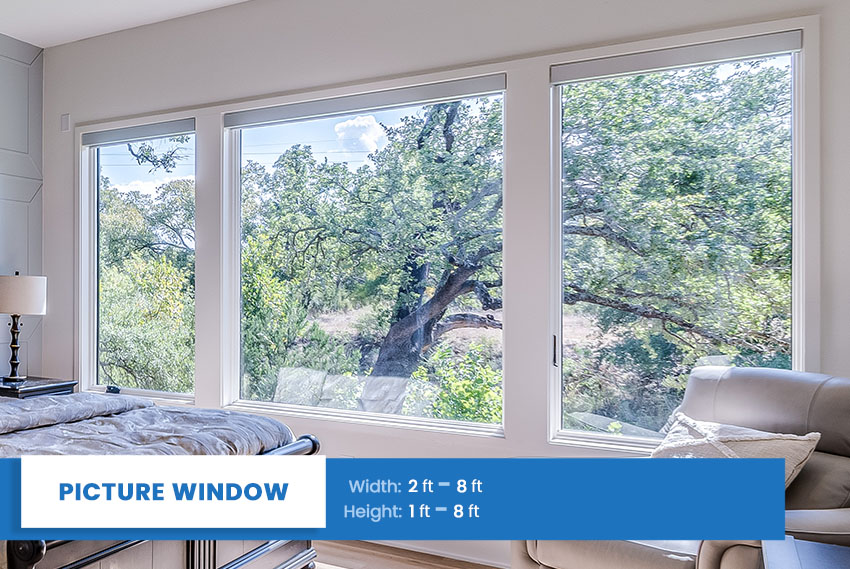
This type is designed for maximum light coming into a home. They usually don’t open and can be found in different parts of the house, including bedrooms.
Most are ordered by custom sizing, but there are also some available ready-made on the market. The most common sizes have a width between 24 to 96 inches. Read our in-depth guide to picture windows here.
Sliding Window
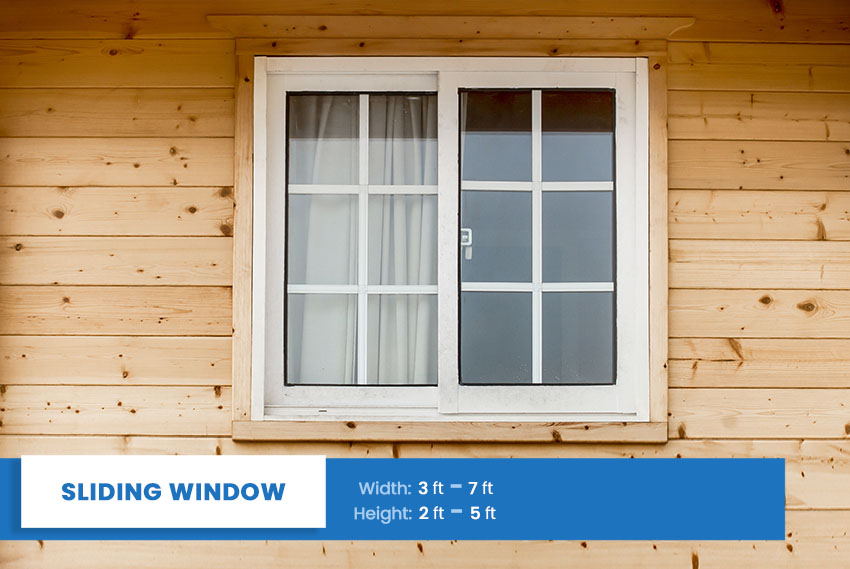
Often installed in bedrooms, kitchens, or basements — they are commonly much broader than they are tall. Sliding windows are also easier to install. They come in widths from 36 inches to 84 inches.
Bay Windows
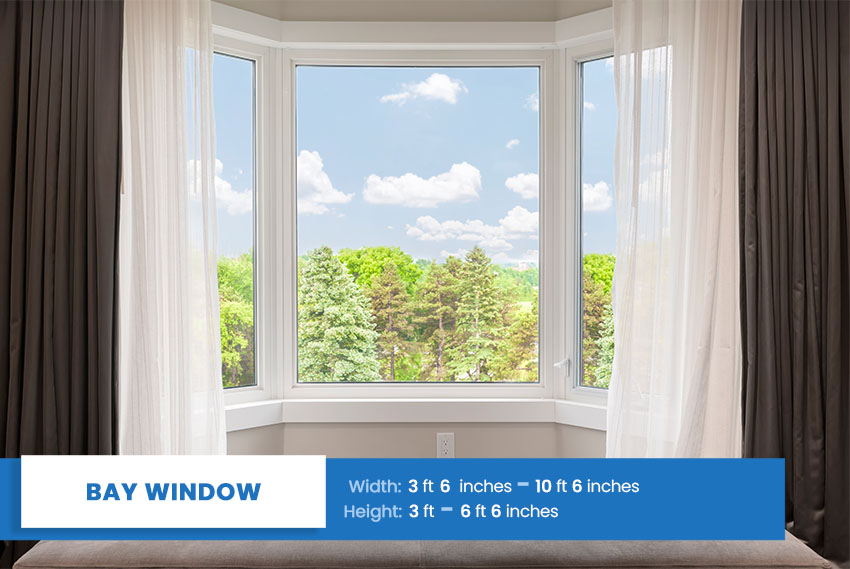
Bay windows has a central panel with two side panels and brings more light into a home and adds aesthetic and architectural design. They are usually more expensive than the other types, but they’re a worthy investment if you add in the aesthetics and added functionality. They usually come in sizes between 3 feet 6 inches to 10 feet and 6 inches.
Casement Windows
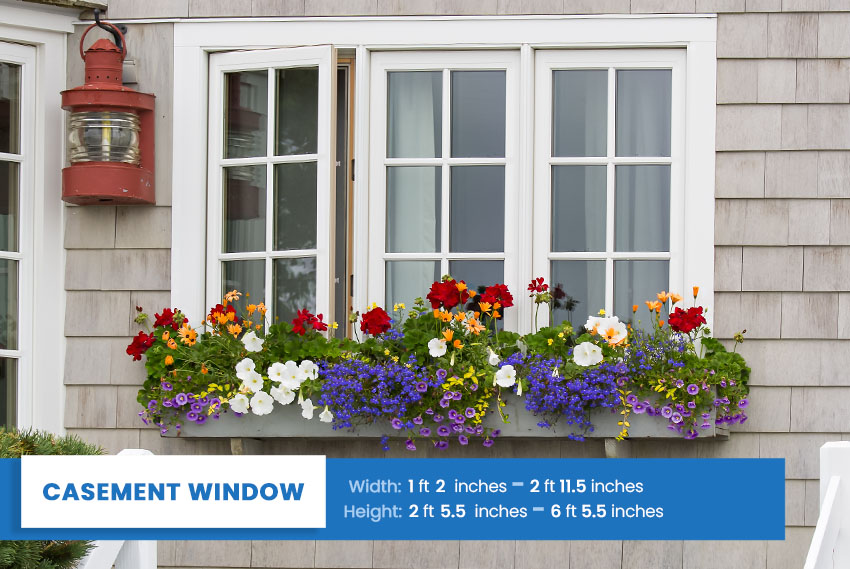
Casement windows open from the side and are usually found in warmer places to allow breezes to enter the home. They are much more reliable than single or double-hung designs in this aspect and also much cheaper. They usually have widths from 1 foot 2 inches to 2 feet and 11.5 inches.
Awning Windows
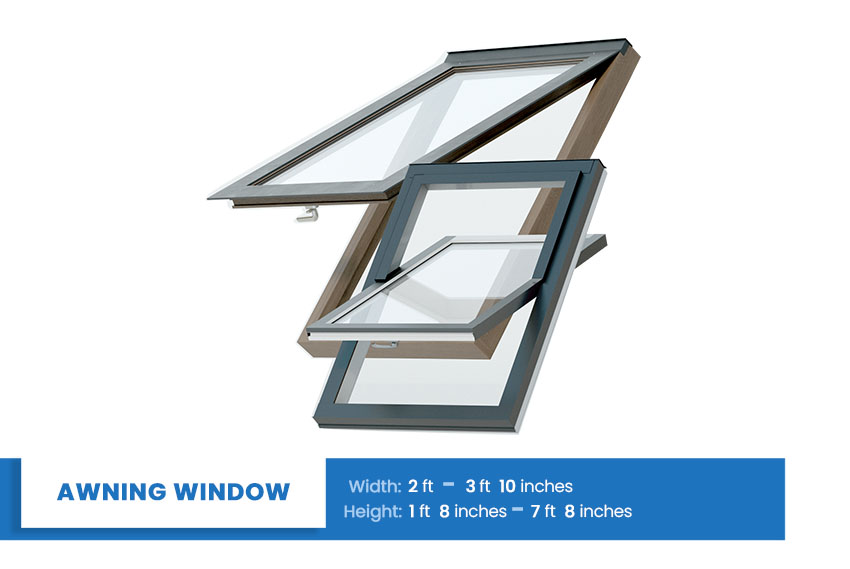
Awning windows, similar to casements, provide excellent ventilation in a home. Their mechanism can be fully opened and tilted inwards.
They are also often used in coordination with other types, such as picture panes, as they can be opened even when it rains. These types have a width of 2 feet to 3 feet 10 inches.
Custom Windows
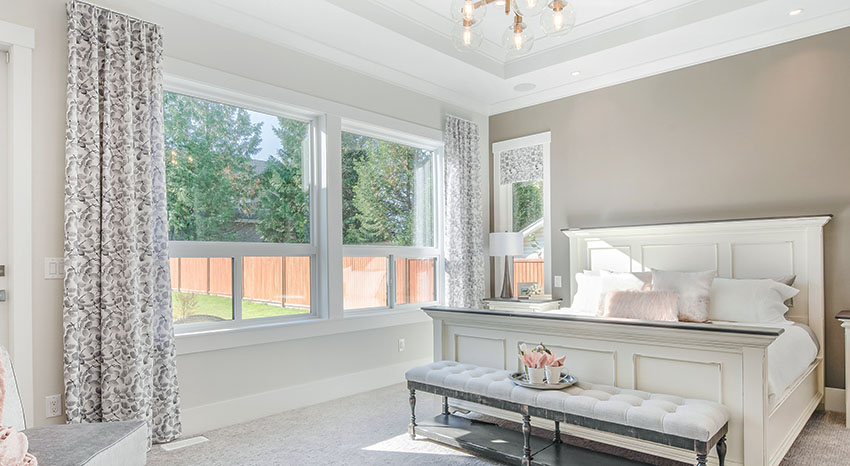
Custom windows, as the name would suggest, are made to fit your house’s openings. These are types that can be customized to your exact preference. Order them in advance to meet your construction or renovation timeline.
Standard Bedroom Window Height
Single or Double Hung – The conventional length for single or double-hung units are between 36 to 72 inches.
Picture Window – Picture styles can have a height as tall as 12 to 96 inches.
Sliding – Since sliders are broader, heights are usually a foot lower than the widths they come in. These types often have a height several inches less than the width.
For example, if you have a slider that is 84 inches wide, a common corresponding height might be around 60 inches. Sliders typically come with a height of 24 to 60 inches.
Bay Windows – These are also broader than they are taller. Regular sizes that are not custom-made frequently fall between 3 feet to 6 feet and 6 inches tall.
Casement – Casements are the other way around, as they are most often taller than they are thicker. They usually come in height between 2 feet 5.5 inches to 6 feet 5.5 inches.
Awning Windows – These are also taller than they are thicker, usually with a height of 1 foot 8 inches to 7 feet 8 inches.
Minimum Size for a Window in the Bedroom
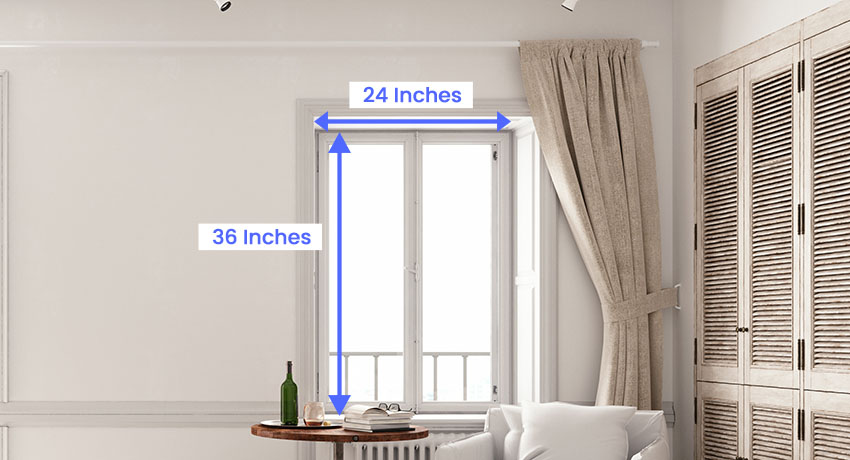
To be able to be considered a bedroom, a room should have a minimum of one window. Recent design and architectural trends gave rise to more oversized openings than usual, but some still opt for smaller openings.
The minimum standard bedroom window size is 24 inches by 36 inches. Many older houses still use this dimension.
Building codes provide requirements for bedroom openings. Generally, it is the same from state to state. A bedroom should allocate 8 percent of its floor area to a window. In addition, it is required to be able to open halfway.
Bedroom Egress Window Measurements
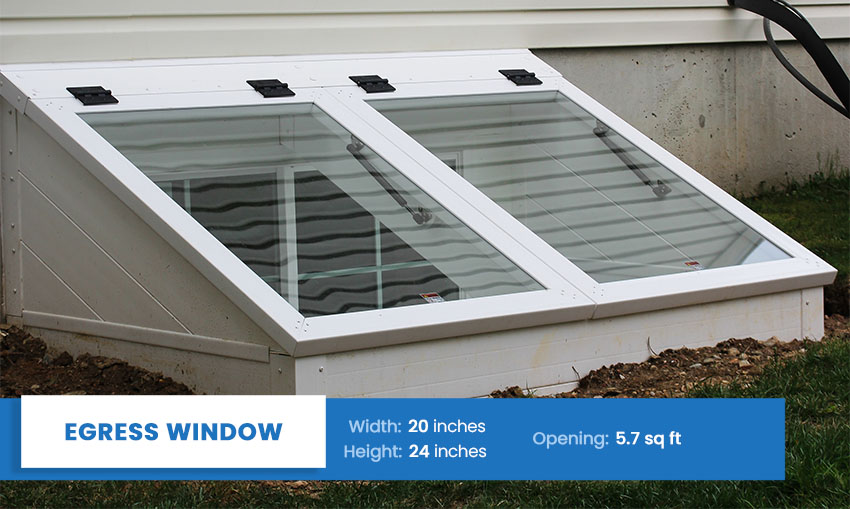
Egresses are emergency exits, and building codes require a house to have them for bedrooms not immediately connected outside on streets or front or back yards through a door.
It’s essential to consider adding egresses in case of accidental fire and whatnot when renovating or building your home. Egresses can be skylights, fire exits for apartments, but most commonly, they could be windows.
Bedroom Egress Requirements
Bedroom windows should have the minimum egress requirement of at least 20 inches wide and 24 inches tall. It should have an opening of 5.7 square feet, according to ICCsafe.org, that is big enough for an average-size person to crawl in and out of, like firefighters.
For safety purposes, bedroom windows should not be installed 44 inches or above a floor, but they should not be installed so low to avoid accidents of children climbing it. It’s also important to note that such egresses should be ready and viable for opening without the aid of keys or other tools.

